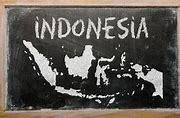
What To Include In A Brand Board
The following should be included in your brand board:
Your primary logo is the centerpiece of your brand’s visual identity. It should be the most recognizable element, used consistently across all primary touchpoints, such as your website, business cards, and product packaging. Ensure that the logo is high-resolution and available in various formats (e.g., .png, .svg) for different applications.
Logo variations adapt your primary logo for different contexts and uses. This can include alternate layouts (e.g., horizontal vs. vertical), simplified versions, and submarks. These variations ensure your logo remains effective, whether it’s on a social media profile, a business card, or merchandise. Always include guidelines on when and where to use each variation.
Your color palette defines your brand’s visual tone. It typically includes primary and secondary colors, each with hex codes, RGB, and CMYK values. These colors should be chosen to evoke specific emotions and align with your brand personality, impacting everything from digital designs to printed materials. Ensure a balance between dominant and accent colors to maintain visual harmony. For inspiration on choosing a color palette for your own brand, here are some SD resources you can check out:
Brand fonts create typographic consistency across your materials. Include primary fonts for headings and secondary fonts for body text, specifying typefaces for different contexts such as print, web, and mobile. Outline usage rules, such as font sizes, weights, and styles, to ensure communication clarity and coherence.
Visual elements like patterns, textures, and icons enrich your brand’s aesthetic. Document specific styles that align with your brand’s personality, and provide examples of how these elements can be used in backgrounds, borders, and overlays. Consistent use of these elements helps reinforce brand identity and adds depth to your designs.
Curate a collection of images that embody your brand’s vibe. This includes lifestyle photos, product shots, and any imagery that conveys the desired look and feel of your brand. Ensure the style, lighting, and composition are consistent, and use photos that appeal to your target audience. Provide guidelines on photo editing and usage to maintain a cohesive visual style.
What Is A Brand Board Template?
A brand board template is a pre-designed framework that provides a structured layout for showcasing the visual elements of a brand’s identity. Typically used by businesses and designers, this same brand board template offers a clear and organized space to display key components such as the primary logo, color palette, typography, iconography, patterns, and any other brand-specific visuals.
A brand board template acts as a starting point, allowing users to easily plug in their specific brand element. Using a brand board template ensures that all vital branding elements are presented in a cohesive and comprehensive manner, making it a valuable tool for maintaining consistency and guiding branding decisions across various marketing materials and platforms.
Brand Board Template Inspiration
The following 10 Brand Boards are pre designed examples from Canva you can use for inspiration.
How Does A Brand Board Help Your Business?
Free Brand Board Template for Canva
The following brand board template is free for you to use in Canva.
Just click the link and make a copy (no email required).
Conclusion: Brand Boards
A brand board helps ensure your business looks consistent and professional across all platforms. By outlining your logos, color palettes, fonts, and visual elements, it simplifies design decisions and keeps your branding cohesive. If you haven’t created one yet, it’s a simple way to maintain consistency and elevate your brand’s presence.
If you have questions or comments about broad boards, please leave them below, and we will respond as soon as possible. We want to hear from you and answer all your questions about brand boards!
is responsible for the oversight of the regulation of the gambling industry throughout the country and to preserve the integrity of South Africa as a responsible global citizen.
The NGB’s strategic intent is to sustain and grow its regulatory capability to position South Africa as the pre-eminent jurisdiction with an exemplary and effectively regulated gambling industry.
69 I clothe the heavens with blackness, and make sackcloth their covering.
69 Aku menyelimuti langit dengan kekelaman, dan menjadikan pakaian berkabung penutup mereka.
What Is A Brand Board?
A brand board is a concise visual summary of a brand’s key elements, including logos, color palettes, and typography. A brand board ensures consistent representation across all marketing materials and serves as a quick reference guide to maintaining a cohesive brand identity.
Click the link to make a copy of this free brand board template (no email required).
Here’s an example of the Samantha Digital brand board:
How To Create A Brand Board
To create a brand board, start by gathering all your brand assets. Everything should be on the table, from your primary logo to visual brand elements. If you’re not a designer, consider working with a graphic designer. They’ll provide brand board examples and insights into visual elements that resonate with your brand strategy.
While it might be tempting to take inspiration from other brands, ensure your brand board speaks authentically to your given brand identity and brand personality. Whether you’re creating a brand identity for a feminine brand or a tech startup, ensure every graphic element, from logo design to visual elements, aligns with your brand strategy.
For a step-by-step guide, check out this blog post: How To Create A Brand Board.
What Is The Purpose Of A Brand Board?
The purpose of a brand board is to serve as a visual guide that encapsulates a brand’s identity in a clear and cohesive manner. It is a reference point for businesses, designers, and marketers, ensuring a consistent brand across various platforms and marketing materials.
A brand board consolidates key visual elements such as logos, color palettes, typography, and other design assets to provide a snapshot of how the brand should be represented visually. This would not only maintain brand consistency but also enhance recognition and trustworthiness among consumers.
Whether launching a new campaign, designing a website, or creating social media content, referring to the brand board ensures that every piece of communication aligns with the core brand identity, reinforcing the brand’s message and values in the market.
Tools to Create Your Brand Board
Here are some popular tools to create your brand board:
Adobe Illustrator: A vector graphics editor ideal for designing logos, icons, and intricate brand visuals and elements.
Adobe InDesign: Geared towards layout design, it’s great for assembling brand boards and brand style guides.
Canva: This user-friendly online tool offers free brand board templates and an intuitive design platform, making it accessible even for non-designers.
Figma: An online UI/UX design tool, it allows for collaborative design and is useful for creating digital-first brand boards.
Related: How to Create a Brand Board for Your Business























